Wearables met health and medicine at the 8th annual Health 2.0 Conference in Santa Clara, CA, last week. I had the real pleasure of shepherding a wearables panel of five innovators during the conference, in a well-attended session followed by an energetic Q&A.
The organizations who demonstrated their tools and brainstormed the wearables market included, in alphabetical order, Atlas Wearables, Heartmath, MySugr, SunSprite and Withings.
I hasten to add that among the five presenters, two were women: that 2 in 5 = 40% gender representation is, happily to my way of thinking about women’s roles in health-making, a very good thing. 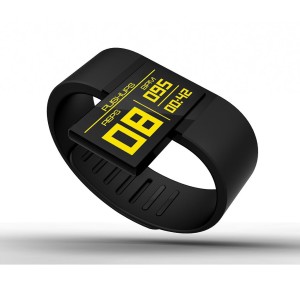
Atlas Wearables’ Co-Founder Peter Li donned the company’s wristwatch device which, as Peter grabbed the dumbbells, recorded that he was doing bicep curls just by sensing his wrist and arm movements. When Peter began to do jumping jacks, the watch recorded that distinct move, as well, and the time and reps done. The watch is accompanied by an app that tracks and analyzes the user’s movements, caloric burn, and other metrics.
 Heartmath was the most mature of the five companies on this panel. Nineteen years old and women-led, Heartmath focuses on stress and heart function and supports an individual’s self-management for heart health. The company channels through both professionals (cardiologists, ancillary therapists, and others) and direct-to-consumer. Heartmath’s mobile app can be used by patients managing heart disease, or as a biofeedback self-tracking tool. Dr. Deborah Rozman, President and Co-CEO, talked about the company’s work with health system providers and patients alike, making Heartmath fairly unique in the digital health space as a company that crosses the chasm between the ultimate users — patients — and clinicians.
Heartmath was the most mature of the five companies on this panel. Nineteen years old and women-led, Heartmath focuses on stress and heart function and supports an individual’s self-management for heart health. The company channels through both professionals (cardiologists, ancillary therapists, and others) and direct-to-consumer. Heartmath’s mobile app can be used by patients managing heart disease, or as a biofeedback self-tracking tool. Dr. Deborah Rozman, President and Co-CEO, talked about the company’s work with health system providers and patients alike, making Heartmath fairly unique in the digital health space as a company that crosses the chasm between the ultimate users — patients — and clinicians.
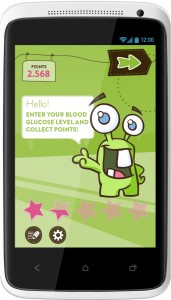 I had the pleasure of experiencing two demo’s from MySugr, first on Sunday at the Patients 2.0 meet-up where I learned about the MySugr Academy which teaches consumers in an engaging way about managing blood glucose; and on this panel, where Kyle Rose, Managing Director US, demonstrated the mobile health app’s well designed screens and user-centered approach for patients controlling diabetes. “Beating the diabetes monster” is the name of the game here, where the entertaining character is reminiscent of a personality from Monsters Inc., bringing a bit of levity and entertainment to an otherwise very tedious task. Taming the monster is an absolutely appropriate metaphor here.
I had the pleasure of experiencing two demo’s from MySugr, first on Sunday at the Patients 2.0 meet-up where I learned about the MySugr Academy which teaches consumers in an engaging way about managing blood glucose; and on this panel, where Kyle Rose, Managing Director US, demonstrated the mobile health app’s well designed screens and user-centered approach for patients controlling diabetes. “Beating the diabetes monster” is the name of the game here, where the entertaining character is reminiscent of a personality from Monsters Inc., bringing a bit of levity and entertainment to an otherwise very tedious task. Taming the monster is an absolutely appropriate metaphor here. 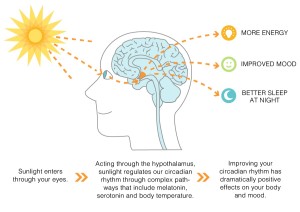
SunSprite’s message that many people don’t get sufficient sunlight was fascinating to me, as I am someone who religiously stays out of the sun or arms up with SPF’s of 50, facial products infused with SPF, and even sunhats and clothing that incorporate SPF into the textiles. So learning more about the role of sun in delivering Vitamin D to humans was an important health message, and one that can marry with preventing harmful sun rays with good education — which SunSprite delivers in its marketing messages. Founded by research physicians from Harvard, SunSprite offers a small clip-on device that measures one’s exposure to the sun to gauge when the optimal (minimal healthy) level of Vitamin D has been received, Ed Likovich, CEO, explained. 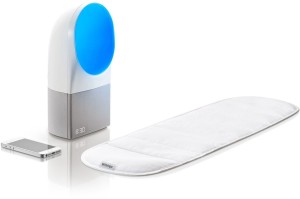
Withings is best-known for its weight scale (of which I am a long-term user and beneficiary). Arielle Carpenter, USA Marketing Manager for the French company, demonstrated the company’s Aura product, which supports quality sleep — something that’s in deficit for a vast number of people who spend too much time at night in blue light with digital devices. The Aura delivers comforting sounds at the bedside, and features a sensor-enabled device that “rests” on the user’s bed to track the user’s sleep — restful or not. Aura’s measurements can be analyzed in concert with the scale, the PULSE (activity tracker) and other tools that Withings will be adding to its digital health ecosystem.
Earlier at the conference, a “fashion show,” The Wearable Tech Fashion Runway, featured many wearable digital health devices: adidas miCoach, OM Signal, Qualcomm Life Samsung, Walgreens, WebMD, and Withings, among others.
Throughout the conference, other wearable and mobile apps for self-tracking were demo’d and discussed. I had the honor of interviewing Albert and Mike Lee, founders of My Fitness Pal, among the most popular food and nutrition apps available. MFP has, arguably, the largest longitudinal health database available, with 65 million users’ food and activity habits tracked. Note that 10% of MFP’s users are over the age of 50. And “we” (MFP users, which includes me) have lost over 150 million pounds. That’s what we technically call a positive health outcome. 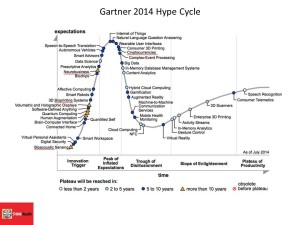
Health Populi’s Hot Points: The Gartner Hype Cycle this year places “wearables tech” at the Peak of Inflated Expectations. I expect to see, and kick tires for, dozens of new smartwatch and wristband flavors emerging at the 2015 Consumer Electronics Show in Las Vegas in January 2015 in the fast-growing Digital Health exhibit halls.
More apps will be developed by companies that perceive what they consider new-new compelling health visions, and some by health providers supported by light and easy to use tools that enable DIY quick app-building.
What this year’s Health 2.0 Conference demonstrated, taken as a whole, was the reality that open APIs are allowing individual fragmented (single-mission) apps to come together which can help people make more sense of health as a whole — beyond steps or calories or weight training or sleep or blood sugar – but those metrics, together, in a dashboard.
The next expectation and need is for sense-making out of the sensors. We have billions of data points — My Fitness Pal users have generated many of them — but data doesn’t equal knowledge, and knowledge doesn’t universally drive behavior change. Remember that wearable digital devices in health are just a means to an end, and they get disbanded quite quickly (within 3-6 months) if users don’t see their value.
This scenario is reminiscent of the pharma industry — which has largely lost the battle of patients’ and medication adherence. “If” the FDA approves a drug, and then “if” a prescription drug plan puts the product on a favorable payment tier, and “if” a doctor or NP prescribes the drug, the fourth pillar is patient engagement: to first fill the Rx, then to take the medication, and to re-fill the chronic med over months, years. This often falls apart within a matter of a few months.
Which prompts me to ask: are digital health tech companies in a manufacturing or service business? As I see it…a company can sell a device, once. But is that device delivering on the promise of behavior change and improved health? Just asking…




 I am so grateful to Tom Lawry for asking me to pen the foreword for his book, Health Care Nation,
I am so grateful to Tom Lawry for asking me to pen the foreword for his book, Health Care Nation,  I love sharing perspectives on what's shaping the future of health care, and appreciate the opportunity to be collaborating once again with Duke Corporate Education and a global client on 6th May. We'll be addressing some key pillars to consider in scenario planning such as growing consumerism in health care, technology (from AI to telehealth), climate change, and trust -- the key enabler for health engagement or dis-engagement and mis-information. I'm grateful to be affiliated with the corporate education provider
I love sharing perspectives on what's shaping the future of health care, and appreciate the opportunity to be collaborating once again with Duke Corporate Education and a global client on 6th May. We'll be addressing some key pillars to consider in scenario planning such as growing consumerism in health care, technology (from AI to telehealth), climate change, and trust -- the key enabler for health engagement or dis-engagement and mis-information. I'm grateful to be affiliated with the corporate education provider  Thank you FeedSpot for
Thank you FeedSpot for